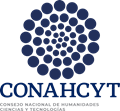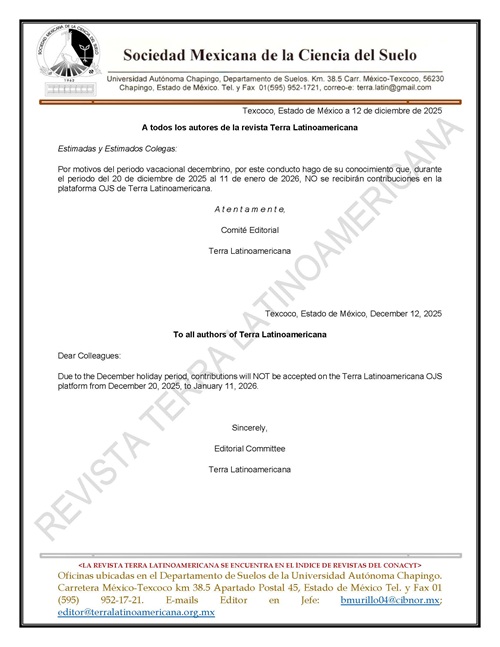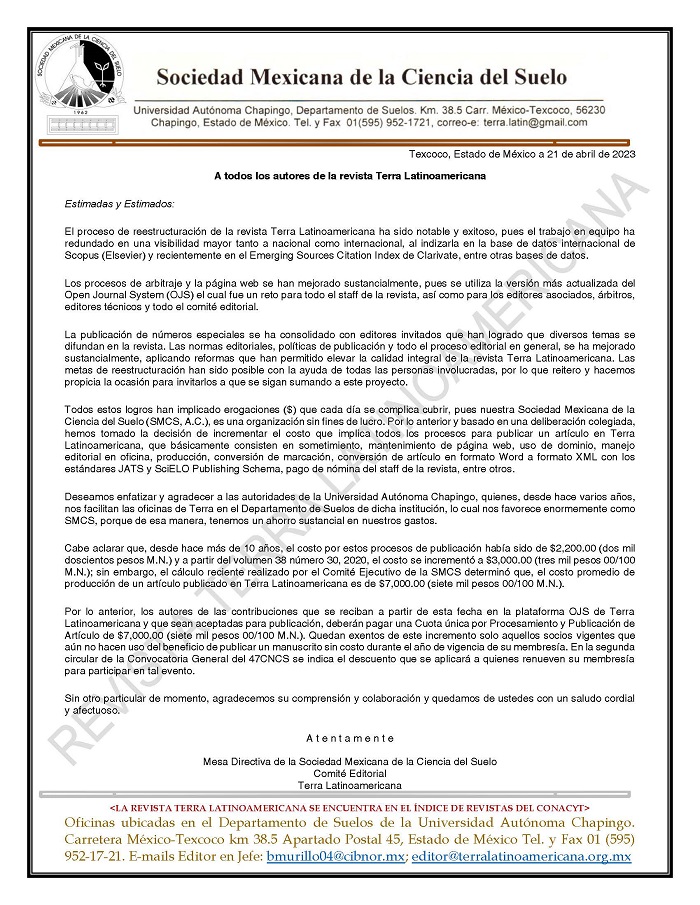Edaphic changes in fertility islands and their importance for performance of an ecosystem in the Tehuacan Valley, Puebla, Mexico
DOI:
https://doi.org/10.28940/terra.v35i2.142Keywords:
soil quality, semiarid zones, indicators, Prosopis laevigataAbstract
In arid and semiarid ecosystems, natural vegetation commonly forms fertility islands, which are separated by wide areas lacking vegetation. It has been suggested that fertility islands are basic functional units in these ecosystems. Soil beneath fertility islands has higher quality and fertility than soil in areas lacking vegetation. The goals of this study were to evaluate soil quality and to compare soil physical and chemical properties inside and outside of fertility islands. We selected 25 fertility islands in an alluvial terrace in the Zapotitlan Valley, Tehuacan, Puebla. Three soil samples were collected beneath the nurse shrub of each island and in the areas lacking vegetation. Soil samples were analyzed in the laboratory to evaluate eight physical and nine chemical-biological properties related to the ecological functions of soil. These properties were used to obtain a soil quality index. Data were analyzed with Student t-test for independent samples. Results showed that there were no significant differences in the soil quality index. However, some soil properties such as sand, apparent density, organic matter, pH, magnesium, total nitrogen, and humidity differed between soils inside and outside fertility islands. We concluded that fertility islands modify some soil properties and functions creating more favorable microhabitats; they reduce water stress and provide nutrients as a result of the mechanisms for capturing and providing organic matter.Downloads
Publication Facts
Reviewer profiles N/A
Author statements
- Academic society
- Terra Latinoamericana
- Publisher
- Mexican Society of Soil Science, C.A.

















